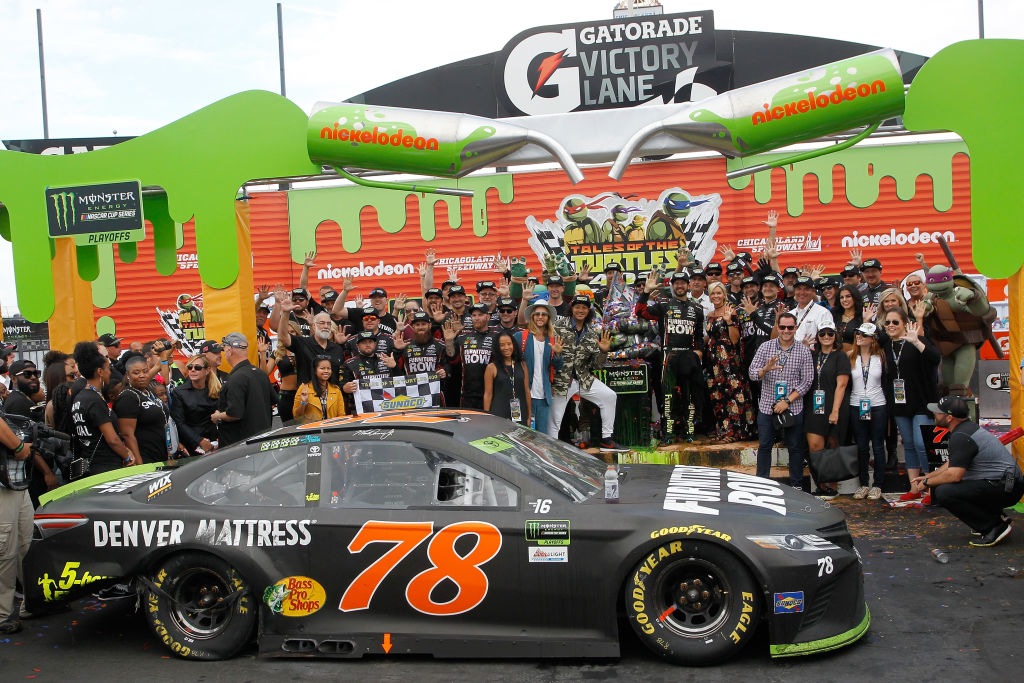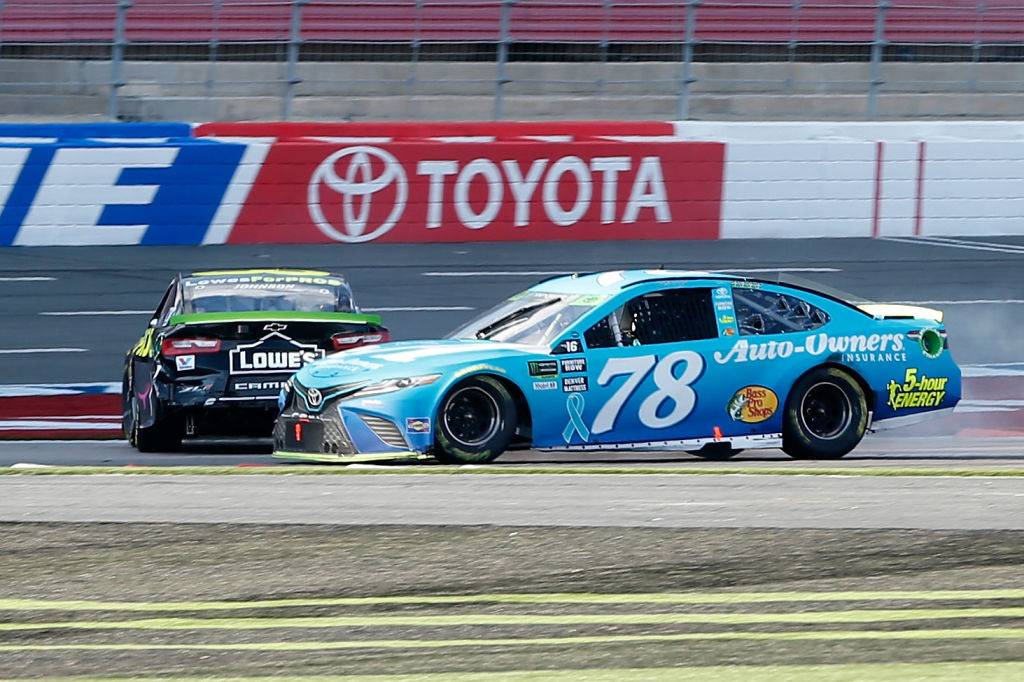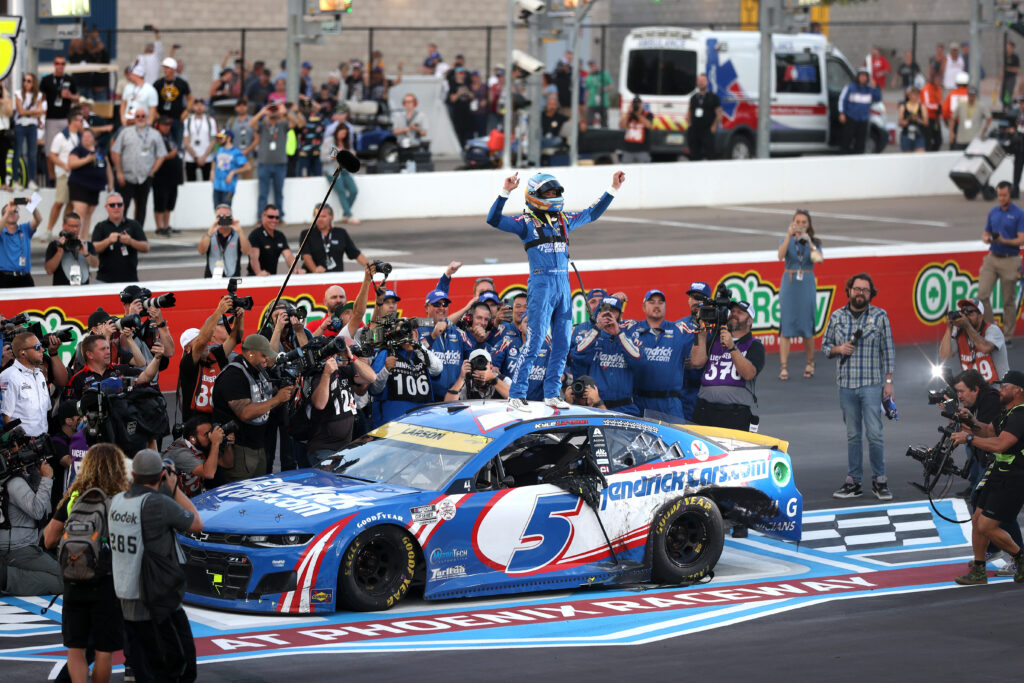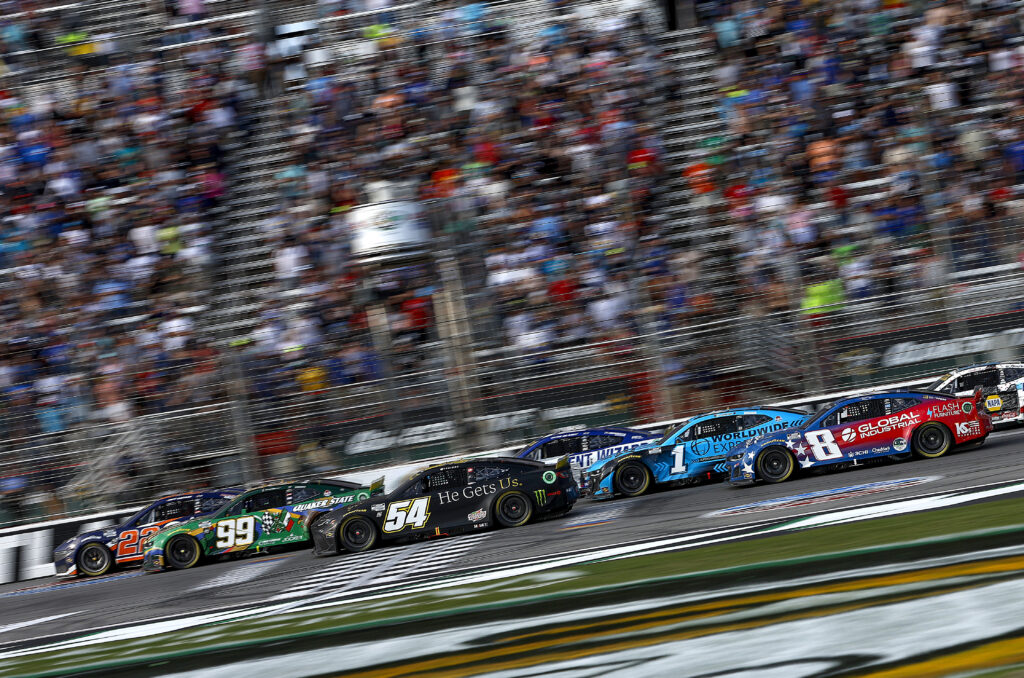The NASCAR Cup Series playoffs are underway! This year’s playoff schedule differed from other years, with notable differences being Atlanta Motor Speedway and Watkins Glen International making their playoff debuts in the elimination format. Fans were mixed on the idea of two superspeedways and two road courses, with some claiming it made the playoffs too random, while others claimed it made the final 10 races more balanced and required a variety of skills to win the Cup. That had us wondering: Should NASCAR’s playoff schedule be similar to this year’s? Or like in the past with traditional ovals and only one road course and superspeedway? Let’s take a look at the pros and cons and find out more.
The first playoff schedule in 2017 was a carryover from 2016. The schedule saw five mile-and-a-half tracks (Chicagoland, Charlotte, Kansas, Texas, Homestead), three-mile-long tracks (New Hampshire, Dover, Phoenix), one short track (Martinsville), and one superspeedway (Talladega). This schedule was dominated by 1 1/2-mile tracks, which made up half of the playoffs.

The pro is that this schedule is the least chaotic. With only one short track and one superspeedway, chaos has little opportunity to reign supreme, allowing the fastest teams to rise to the top. In 2017, Martin Truex Jr. won four of the 10 playoff races (Chicagoland, Charlotte, Kansas, Homestead) en route to the championship and finished top-five in nine of the 10 races. With this schedule, the fastest in the field took home the trophy.
The con is that the schedule can be seen as boring or mundane. There was little excitement, which fans would want given these are the 10 most important races of the season. In addition, upset playoff teams didn’t have much opportunity to advance out of the first round. With Chicagoland, New Hampshire, and Dover as the first three races, barring a miracle, drivers like Kasey Kahne and Austin Dillon were first-round locks to be eliminated. The lack of speed or consistency caught up to them, making their playoff appearance short and brief.
The playoff schedule from 2018-2019 was similar to 2017, with a few changes. First, Las Vegas Motor Speedway replaced Chicagoland as the opener, and New Hampshire was swapped out for Richmond Raceway, giving the playoffs its second short track. The most significant change was removing and replacing the Charlotte Oval with the Charlotte Roval. The Round of 12 saw Dover be moved in as the round opener as well.

The pros were the schedule was more diverse. With two short tracks, a road course, four 1-1/2-milers, two one-milers, and a superspeedway, it gave a new flair to the schedule that hadn’t been seen up until then. In addition, it allowed drivers underneath the cutline with a skillset in short tracks or road courses to make up ground and potentially upset the field. It was a nice change of pace from 2017 and made the playoffs more interesting. The con was that many saw the addition of the Roval as similar to Talladega, a wild card race that could allow a lesser deserving team to make it to the next round. In addition, the schedule was still heavy on 1-1/2-mile tracks. The 2018-2019 schedule was the start of NASCAR adding new changes to their championship battle.
This playoff schedule was NASCAR’s most significant in the Playoff Era. Two new tracks were added (Darlington and Bristol), replacing Homestead and Dover, both of which were in the Round of 16. Martinsville was moved to the penultimate race of the season before Phoenix as the championship race at the end of the season. This unique schedule brought new life to the NASCAR playoffs with various tracks. The pros were the additions of Darlington and Bristol. These tracks are fan favorites, and having them in the playoffs only increased their prestige. In addition, moving Martinsville to the Round of 8 finale was a genius decision that saw many iconic moments, such as Kevin Harvick in 2020 and the Hail Melon in 2022.

The con was Phoenix as the championship finale. Despite the schedule having so many iconic tracks, ending the season at Phoenix was never a popular move. The track has struggled to produce good racing in the last seven years, and to give that track the finale, it felt the season would end on a whimper. Overall, a diverse playoff schedule with a plethora of iconic and fun tracks, despite a lackluster finale, made this era of the NASCAR playoffs one to remember.
Finally, we’ll look at 2024. Two significant changes were made to the playoff schedule: Removing Darlington Raceway and Texas Motor Speedway and replacing them with Atlanta and Watkins Glen. For the first time in the Playoff Era, two road courses and two superspeedways would make up the final 10 races. This one takes the cake in terms of a “wild card” schedule. The pros are that it allows underdog drivers to make up ground. Drivers like Austin Cindric, who excels in superspeedways and road courses, can perform better than expected, as evidenced by his performance at Atlanta. In addition, it requires drivers to excel at all aspects of racing. They must perform with two road courses, two superspeedways, two short tracks, three 1-1/2-mile tracks, and a one-mile track. It won’t be enough to be good at one discipline to move on.

The con is it allows for more chaos. Superspeedway racing is described as a lottery, and adding an extra drafting track makes the playoffs more of a wild card. The same can be said for a second road course, but to a lesser extent. Also, with Phoenix still hosting the championship finale, the end of the season can still feel underwhelming.
What do you think about all this? Let us know on Discord or X what your take is, and don’t forget you can also follow us on Instagram, Facebook, and YouTube.
